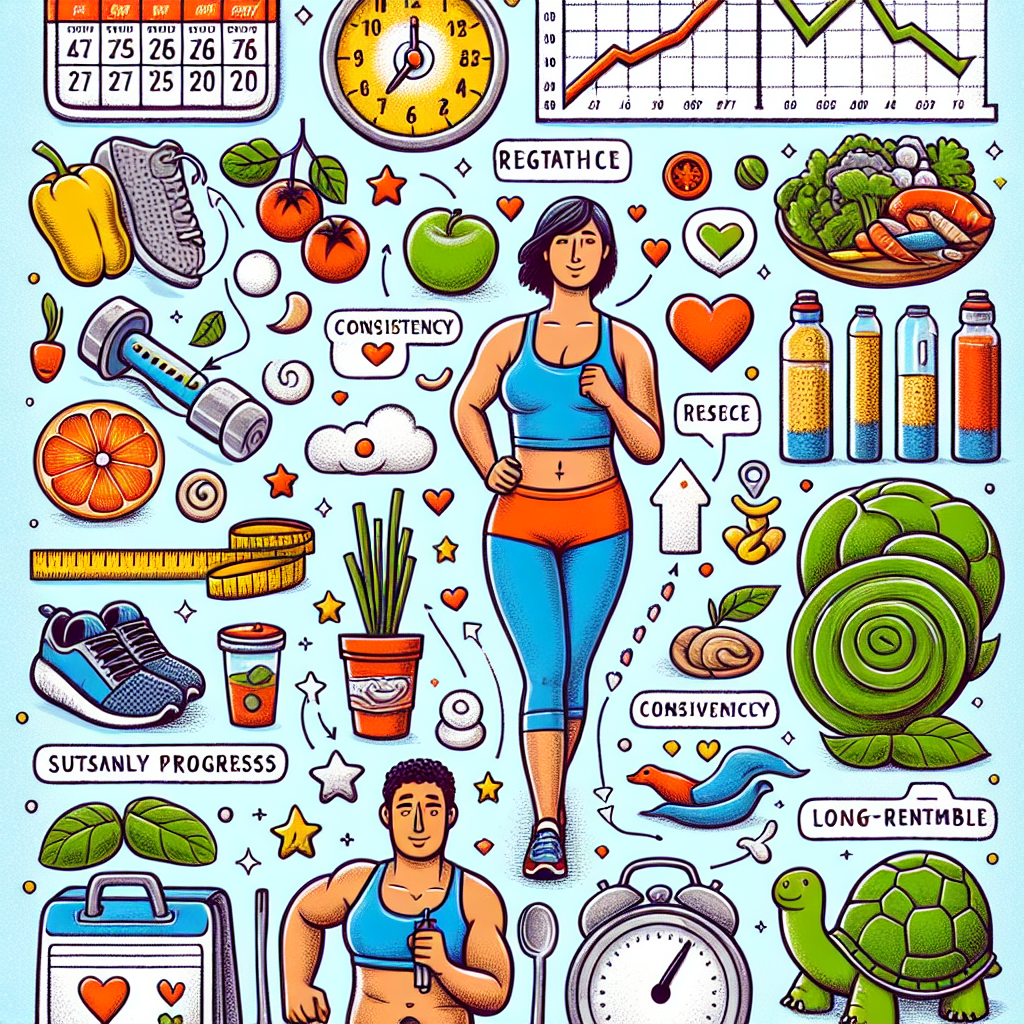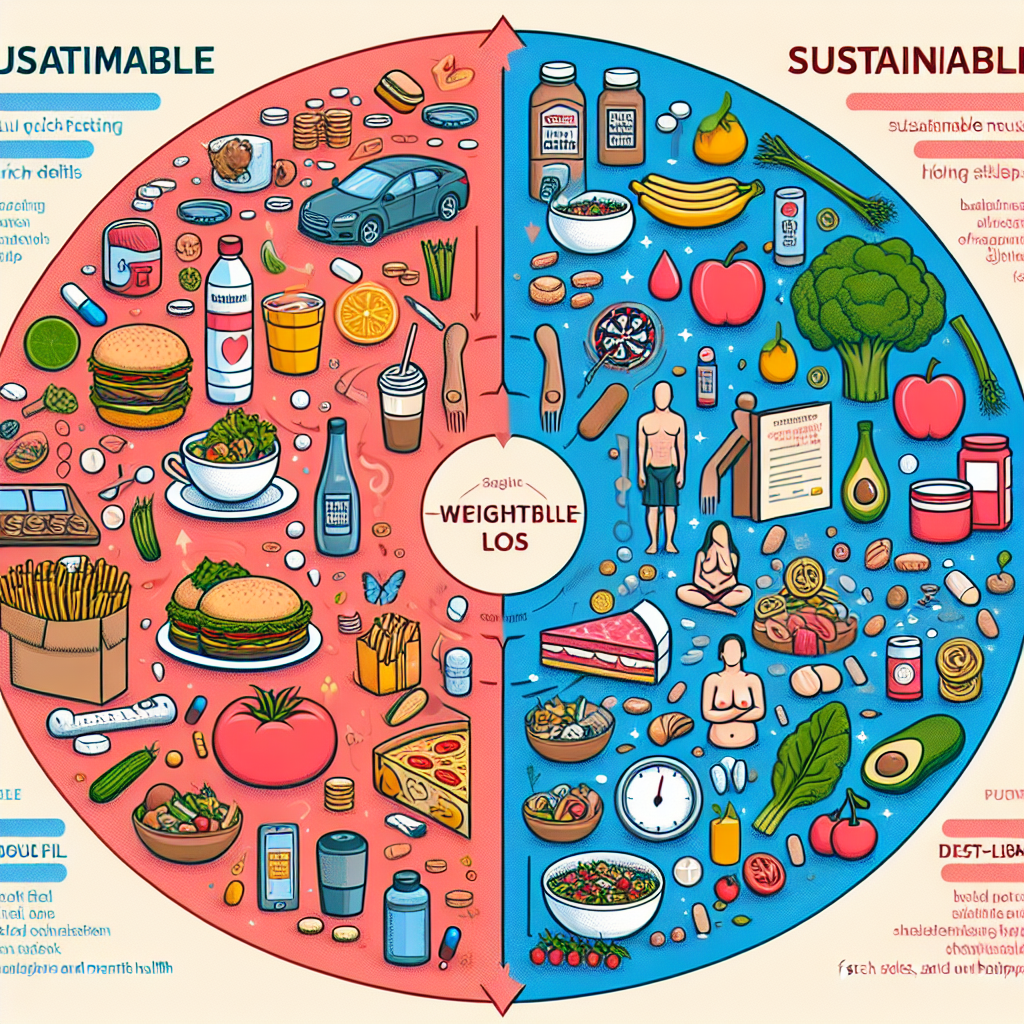What Sustainable Weight Loss Really Looks Like

Discover what sustainable weight loss really looks like! Learn the secrets to maintaining a healthy weight for life. Visit My Vibrant Vitality now.
Understanding the Realities of Sustainable Weight Loss
Sustainable weight loss is a term that is often thrown around in the health and fitness industry, but what does it really mean? It’s not about quick fixes, fad diets, or drastic measures. Instead, sustainable weight loss is about making long-term changes to your lifestyle that not only help you lose weight, but also maintain it in the long run.
To understand the realities of sustainable weight loss, it’s important to first dispel some common misconceptions. Many people believe that losing weight quickly is the best approach. However, research has shown that rapid weight loss can lead to muscle loss and a slower metabolism, which can make it harder to keep the weight off. In contrast, losing weight at a slow and steady pace can help preserve muscle mass and maintain a healthy metabolism.
Another misconception is that you need to follow a strict diet to lose weight. While it’s true that reducing calorie intake is a key part of weight loss, it’s not necessary to completely eliminate certain foods or food groups. In fact, overly restrictive diets can lead to nutrient deficiencies and are often difficult to stick to in the long term. Instead, a balanced diet that includes a variety of foods from all food groups can provide the nutrients your body needs while still allowing you to lose weight.
Exercise is another crucial component of sustainable weight loss. However, it’s not just about burning calories. Regular physical activity can help improve your mood, reduce stress, and increase your energy levels, all of which can make it easier to stick to your weight loss plan. Additionally, exercise can help build muscle, which can boost your metabolism and help you burn more calories, even when you’re at rest.
While diet and exercise are important, sustainable weight loss also involves making changes to your mindset. This means setting realistic goals, being patient with yourself, and focusing on progress rather than perfection. It’s also important to find ways to stay motivated, such as celebrating small victories and finding activities you enjoy.
One of the most important aspects of sustainable weight loss is consistency. This doesn’t mean you have to be perfect all the time, but rather that you consistently make healthy choices most of the time. This could mean choosing a salad over a burger for lunch, taking the stairs instead of the elevator, or going for a walk after dinner instead of watching TV. These small changes can add up over time and lead to significant weight loss.
Finally, it’s important to remember that sustainable weight loss is a journey, not a destination. There will be ups and downs, successes and setbacks. But by staying committed to making healthy changes, you can achieve and maintain your weight loss goals.
In conclusion, sustainable weight loss is about more than just diet and exercise. It’s about making long-term changes to your lifestyle, mindset, and habits. It’s about finding a balance that works for you and sticking to it, even when it’s hard. And most importantly, it’s about treating yourself with kindness and patience along the way. Because in the end, sustainable weight loss is not just about losing weight, it’s about gaining health.
The Science Behind Sustainable Weight Loss

Sustainable weight loss is a term that has been gaining traction in the health and wellness industry. It refers to the process of losing weight gradually and maintaining it over a long period of time. This is in stark contrast to the quick-fix diets and weight loss fads that promise rapid results but often lead to weight regain. But what does sustainable weight loss really look like, and what is the science behind it?
The science of sustainable weight loss is rooted in the understanding of how our bodies function. Our bodies are complex systems that require a balance of nutrients to function optimally. When we consume more calories than our bodies need, the excess is stored as fat. Conversely, when we consume fewer calories than our bodies need, we tap into these fat stores for energy, leading to weight loss. However, this process is not as straightforward as it seems.
Our bodies are designed to protect us from starvation. When we drastically reduce our calorie intake, our bodies respond by slowing down our metabolism to conserve energy. This is why people often hit a weight loss plateau after initial success with low-calorie diets. The body has adapted to the new lower calorie intake, and weight loss slows down or stops altogether. This is also why people often regain weight after stopping a diet. The body is trying to replenish its energy stores in anticipation of another period of starvation.
Sustainable weight loss, therefore, involves creating a calorie deficit that is small enough to avoid triggering this starvation response. It’s about making small, gradual changes to your diet and physical activity levels that you can maintain over the long term. For example, instead of cutting out 500 calories a day, you might cut out 200 and burn an additional 300 through exercise. This creates a similar calorie deficit but without the drastic reduction in food intake.
Another key aspect of sustainable weight loss is the quality of the calories consumed. All calories are not created equal. 500 calories from a fast-food burger will not have the same impact on your body as 500 calories from lean protein, whole grains, and vegetables. The latter will provide a range of nutrients that support overall health and help you feel full and satisfied, making it easier to stick to your diet.
Exercise is also a crucial component of sustainable weight loss. Not only does it help create a calorie deficit, but it also has numerous other health benefits. Regular physical activity can improve cardiovascular health, boost mood, and increase energy levels. It also helps to preserve lean muscle mass, which is important for maintaining a healthy metabolism.
In conclusion, sustainable weight loss is not about quick fixes or drastic measures. It’s about understanding how your body works and making changes that support its natural processes. It’s about eating a balanced, nutrient-dense diet and being physically active. It’s about making changes that you can maintain over the long term, not just until you reach your goal weight. This is what sustainable weight loss really looks like. It may take longer, but the results are more likely to last.
Achieving Long-Term Success: The Truth about Sustainable Weight Loss
Sustainable weight loss is a term that is often thrown around in the health and fitness industry, but what does it really mean? It’s not about quick fixes, fad diets, or drastic measures. Instead, sustainable weight loss is about making long-term changes to your lifestyle that not only help you lose weight, but also maintain it over time.
The truth about sustainable weight loss is that it’s a slow and steady process. It’s not about losing a large amount of weight in a short period of time, but rather about losing a moderate amount of weight over a longer period of time. This is because rapid weight loss can often lead to muscle loss, nutrient deficiencies, and other health problems. On the other hand, losing weight at a slow and steady pace allows your body to adjust to the changes and maintain its health.
Moreover, sustainable weight loss is not just about dieting. It’s about making healthy changes to your eating habits that you can stick with for the rest of your life. This means eating a balanced diet that includes a variety of foods from all food groups, and not depriving yourself of the foods you love. It’s about learning to make healthier choices, portion control, and listening to your body’s hunger and fullness cues.
Exercise is another crucial component of sustainable weight loss. Regular physical activity not only helps you burn calories and lose weight, but it also improves your overall health and well-being. It’s important to find a type of exercise that you enjoy and can incorporate into your daily routine. This could be anything from walking or cycling to swimming or weightlifting. The key is to stay active and make exercise a regular part of your life.
In addition to diet and exercise, sustainable weight loss also involves making changes to your mindset and behavior. This means setting realistic goals, staying motivated, and dealing with setbacks in a positive way. It’s about learning to appreciate your body and the progress you’ve made, and not comparing yourself to others. It’s about understanding that weight loss is a journey, not a destination, and that it’s okay to have ups and downs along the way.
Lastly, sustainable weight loss is about seeking support when you need it. This could be from a registered dietitian, a personal trainer, or a support group. These professionals can provide you with the guidance and encouragement you need to stay on track and achieve your weight loss goals.
In conclusion, sustainable weight loss is a complex process that involves more than just dieting. It’s about making long-term changes to your lifestyle, including your eating habits, physical activity levels, mindset, and behavior. It’s about losing weight at a slow and steady pace, and maintaining it over time. It’s about appreciating your body and the progress you’ve made, and seeking support when you need it. This is what sustainable weight loss really looks like.